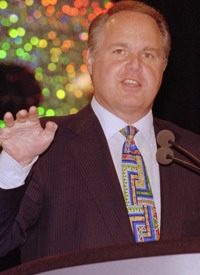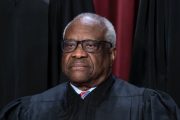
Despite dedicating five minutes of his recent 20-minute presentation at the Media Access Project forum to decrying the “right-wing smear campaign” he claims to be the target of, FCC Chief Diversity Office and Associate Counsel at the Federal Communications Commission (FCC) Mark Lloyd assured attendees that he was not carrying out “a secret plot funded by George Soros” to eliminate conservative talk-show voices such as Rush Limbaugh and Glenn Beck.
In a rambling and self-obsessed scree that touched on everything from Rush Limbaugh to Hugo Chavez, Lloyd, the forum’s keynote speaker, spent the rest of his address defending his organization’s policies that have been criticized as backdoor attempts to reinvigorate the Fairness Doctrine, an FCC regulation introduced in 1949 that required broadcasters to present all sides of a controversial topic. Until it was revoked in 1987, the practical application of the rule was a prior restraint on broadcast of robust debate on prickly points of public policy.
Touting his own independence of thought and unalloyed determination to bolster the vitality of the public airwaves by strengthening diversity, Lloyd reminded listeners that he was not one of President Obama’s army of czars, and he was a staunch supporter of free speech. One wonders why a man charged with monitoring fairness at the agency tasked with policing the content of publicly broadcasted programs would feel compelled to trumpet his devotion to freedom. Perhaps the officer doth protest too much?
One thing Lloyd protested openly and vehemently is the vicious vendetta he asserts is being undertaken by a branch of the larger “vast right-wing conspiracy.” He claims that blogs, YouTube, Facebook, Twitter, and all other iterations of the so-called new media are being manipulated by tech-savvy opponents of him; his policy positions they deem contrary to established principles of freedom of speech, especially as pertains to the radio and television. “Anyone who suggests that Facebook and YouTube are the answers to the problems of old media has not been confronted by a smear campaign using these social media tools,” lamented Lloyd. Lloyd remarked that the accusations made by these new media mavericks distort his views and paint an inaccurate portrait of his views on the First Amendment generally and the relevant sub-topics of unfettered free speech and continuing government funding of old media outlets.
Despite painting himself as the much-maigned innocent, Lloyd’s public record is voluminous and rife with statements suggesting sympathy with stricter government regulation of the content of speech broadcast over the air. Also, Lloyd has learned something of the tactics of targeting from his detractors, as he has mentioned Rush Limbaugh by name in several essays published online in academic journal and therein has suggested that free-speech protections enshrined in the Constitution should not hamstring Congress’ ability to gag Limbaugh or at least constrain him to present both sides of the issues he confronts on his daily syndicated talk show.
While not categorically denying these accusations, Lloyd does describe them as “simplistic distortions” of a complicated and distinguished chronicle of congressional testimony, articles, and books on the subject of media and broadcast rights and restrictions. In his defense against what he calls “right-wing haters,” Lloyd maintains that his focus has always been the preservation of the American democracy through careful and conscientious control of communications.
A thorough exposition of Lloyd’s view on the central role played by communications in the overall scheme of securing the blessings of liberty to the American public was contained in his 2006 book, Prologue to a Farce: Communications and Democracy in America. In this 352-page defense of rigorous regulation published by the University of Illinois Press, Lloyd identifies fellow author Saul Alinsky as someone from whom he took “inspiration and guidance.” While not a household name, Alinsky is a radical bomb-thrower from the 1970s notorious for penning the guidebook of civil and not-so-civil unrest, Rules for Radicals, in which he allies himself with Satan, whom he identifies as the “first radical.”
In his book, Lloyd advocated the establishment of a network of public-broadcasting outlets funded by heavy taxes and fees imposed on private broadcasting interests that would be equal to or greater than the money those companies invest in their own companies. That way, argues Lloyd, the government would be sufficiently empowered with a bullhorn loud enough to counterbalance the increasing volume of the popular message of “ultra-conservative” opinion makers currently dominating the AM and FM dials. This is the only way to assure obedience to rules designed by Lloyd and his cohorts to prevent “global corporations from [blocking] rules that would promote democratic governance.”
That is to say, as Lloyd figures, the most effective way to strap a muzzle on those who dare oppose tightening the reins on the free expression of ideas is to flood the airwaves with old-style media blowtorches (forcibly funded by competing commercial concerns) that would spew unrestrained pro-government agitprop throughout the nation and thus drown out the voices of those dedicated to the preservation of those freedoms safeguarded by the enumeration of limited powers granted to the Congress in the Constitution (among which is not to be found the right to control, monitor, or license broadcasting of radio or television programming), and thus to the perpetuation of the Republic, not the democracy, bequeathed us by our Founding Fathers.
Photo: AP Images



